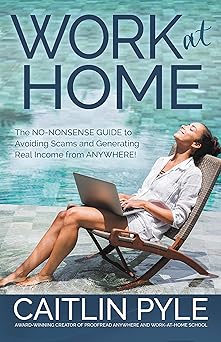
The Working Mother Ultimate Guide to Working From Home: How to Survive in Your Job, Care for Your Kids, and Stay Sane is a practical, empathy-driven handbook assembled by Working Mother Magazine and released in 2021. It’s aimed at the enormous cohort of parents—primarily mothers—who found themselves juggling professional responsibilities and childcare under one roof, often with little preparation. The book is not an academic treatise or a memoir; it’s a pragmatic toolkit whose value comes from concentrated, experience-based guidance rather than theoretical frameworks. For anyone who needs straightforward, implementable advice about life when home is also the office, this book delivers.
What the book sets out to do
At its best, the guide acknowledges the messiness of working-from-home parenting and responds with a mix of concrete strategies, sanity-preserving routines, and mindset coaching. The central promise is modest: help readers survive and, when possible, thrive in a work-from-home arrangement by blending time management, boundary-setting, communication tactics, and self-care with realistic parenting ideas. The tone throughout is maternal and managerial at once—supportive, no-nonsense, and oriented toward workable solutions.
Organization and structure
The book is organized into short, focused chapters that make it easy to pick up in snippets—ideal for sleep-deprived parents or someone stealing five minutes between meetings. Chapters cover core topics such as establishing a home work routine, communicating expectations with managers and partners, creating child-friendly work strategies, managing household logistics, protecting career momentum, and carving out personal time. Interludes of quick tips, lists of action items, and scenarios readers can adapt to their own lives appear regularly, making the manual feel like a portable adviser rather than a dense how-to book.
Key strengths
Practical, actionable advice
This is the guide’s strongest suit. Instead of abstract platitudes, readers get checklists they can implement immediately—setting up "meeting kits" for kids, scripting short manager updates that signal productivity while acknowledging constraints, and templates for household chore rosters. The recommendations are granular and realistic: how to ask for schedule accommodations, how to handle overlapping video calls, and how to use microbreaks to prevent burnout.
Empathy and validation
Working parents—especially mothers—often receive advice that implicitly blames them for stress or time pressure. This book repeatedly validates the reader’s experience: juggling work and care is hard, and structural solutions (policy, employer flexibility) are as important as personal tactics. That empathetic voice reduces shame and makes readers more receptive to trying new approaches.
Focus on communication and boundary-setting
A recurring theme is that success working from home depends less on “perfect efficiency” and more on honest, proactive communication. The book walks readers through framing conversations with bosses, setting expectations with colleagues, and negotiating household roles. Those scripts and examples are particularly useful for readers not accustomed to advocating for themselves in professional contexts.
Practical parenting strategies
The book doesn’t ignore the kids. It offers age-appropriate ideas for keeping young children engaged during work hours, how to prepare older kids for independent study, and suggestions for setting up transition rituals between parent work mode and parent play mode. These are grounded in realistic assumptions: kids will interrupt; the goal is not perfection but predictability.
Career-conscious guidance
Unlike some parenting books that implicitly advise career sacrifice, this guide insists on protecting professional identity. It includes sections on documenting accomplishments, staying visible in remote teams, and planning for long-term career health while managing present constraints—advice many readers will find empowering and rare in parenting-focused literature.
What could be stronger
Limited cultural and socioeconomic breadth
While the book is broadly useful, its examples sometimes assume a two-parent household, access to paid childcare alternatives, or a flexible employer. Single parents, gig workers, or families without discretionary income may find some recommendations hard to apply without adaptation. The guide acknowledges structural barriers but could give deeper, more tailored strategies for those in less privileged circumstances.
General rather than research-heavy
Readers looking for deep dives into the psychology of multitasking, neuroscience of interruptions, or scholarly citations will be disappointed. The book prefers usable wisdom to academic citation. That’s a design choice, but it limits the guide’s authority for readers who want evidence-backed justification for every tactic.
Not fully comprehensive for every job type
The examples skew toward office-based knowledge work—roles that fit video calls, emails, and project management tools. Workers whose tasks are hands-on, shift-based, or field-oriented will find fewer directly applicable tips.
Style and readability
The writing is clear, conversational, and brisk. Chapters are short and chapter-openers often offer a one-sentence summary, which helps readers with limited time decide what to read. The book’s editorial voice—warm, occasionally wry, and direct—keeps the material from feeling prescriptive. Practical lists and callouts are frequent, which is useful but occasionally makes the text read like a long series of memos rather than a unified narrative. For a manual-style book, though, that’s an acceptable trade-off.
Who should read it
-
Parents newly working from home who need immediate, actionable strategies.
-
Anyone feeling overwhelmed by the blur of work and family life who wants practical steps to create structure and reduce stress.
-
Readers who prefer hands-on guidance over academic studies or memoir.
Who might want something else
-
Readers seeking research-heavy or highly individualized solutions (e.g., tailored to single parents or nontraditional family structures) might need supplemental resources.
-
Those in non-knowledge industries or with highly irregular schedules will need to extrapolate or modify many suggestions.
Takeaway chapters and standout tips
Several recurring, memorable pieces of advice anchor the book’s utility:
-
Build ritualized transitions: short, consistent actions that mark the boundary between work and family time (a five-minute breathing exercise, a special “work hat” children recognize, or closing a physical door). These small rituals cue both adults and children and help preserve psychological separation.
-
Script your asks: short, professional messages to managers that state constraints and propose solutions (e.g., “I can block 9–11 a.m. for focused work and handle quick check-ins in the afternoon; would that work?”). This reduces defensiveness and centers on solutions.
-
Use meeting hygiene: lower the cognitive load by shortening meetings, sharing agendas in advance, and pre-assigning someone to take notes or make decisions—tactics that benefit everyone, not just parents.
-
Plan for interruptions: instead of pretending interruptions won’t happen, schedule microtasks for vulnerable times and batch deep work for when uninterrupted hours are most likely.
-
Self-care as non-negotiable: the book reframes short breaks, sleep, and social connection as productivity enablers rather than indulgences.
Comparison to other guides
Compared with personal narratives about balancing work and parenting, this guide is more procedural and less confessional. Compared with purely managerial books on remote work, it centers caregiving and emotional labor as core constraints rather than peripheral problems. That middle-ground approach—part practical manual, part supportive companion—makes it distinctive and broadly useful for its target audience.
Practical use: how to get the most from it
Treat the book as a living reference. Read the opening chapters for mindset and validation, then dip into topic-specific chapters when a particular problem arises (e.g., dealing with a toddler during calls, negotiating a flexible schedule, or protecting career momentum). Copy the templates and scripts into a personal folder so you can adapt them quickly when the need arises. Finally, use the small actions suggested—rituals, microbreaks, and communication scripts—to build habits rather than seek a one-time fix.
Final verdict
The Working Mother Ultimate Guide to Working From Home is a timely, compassionate, and eminently usable handbook for parents trying to hold together jobs and caregiving in the same physical space. It won’t solve structural issues—lack of affordable childcare, inflexible workplaces, or unequal domestic labor—but it offers tools that reduce daily friction and protect mental health. For readers seeking immediate, practical tactics and straightforward emotional validation, this book is an excellent resource. If you want exhaustive research or solutions tailored to rare or extreme situations, supplement it with more specialized resources—but for the typical working parent, it’s a smart, empathetic guide that’s easy to dip into and put into practice.
Get Working Mother Ultimate Guide To Working From Home On Amazon!









